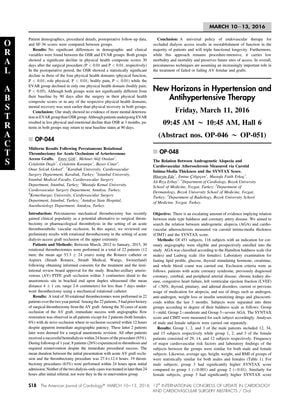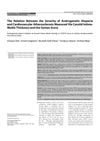The Relation Between Androgenetic Alopecia and Cardiovascular Atherosclerosis Measured via Carotid Intima-Media Thickness and the SYNTAX Score
June 2016
in “
American Journal of Cardiology
”

TLDR Hair loss may indicate higher risk of heart disease.
This study investigated the relationship between androgenetic alopecia (AGA) and cardiovascular atherosclerosis measured via carotid intima-media thickness (CIMT) and the SYNTAX score. The study found that patients with higher stages of AGA had significantly higher SYNTAX score and CIMT value among both genders, indicating that AGA may be a simple phenotypical indicator for cardiovascular atherosclerosis. The study included 116 subjects with an indication for coronary angiography.



